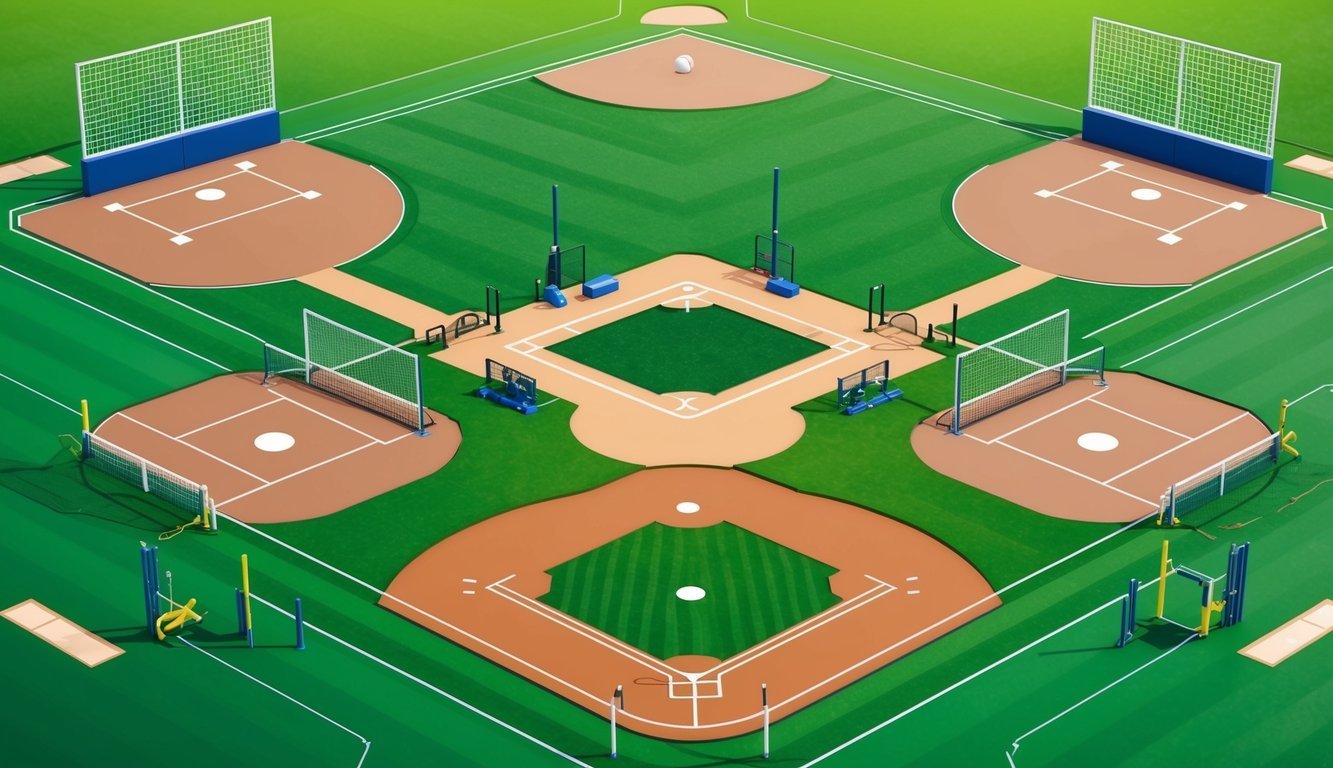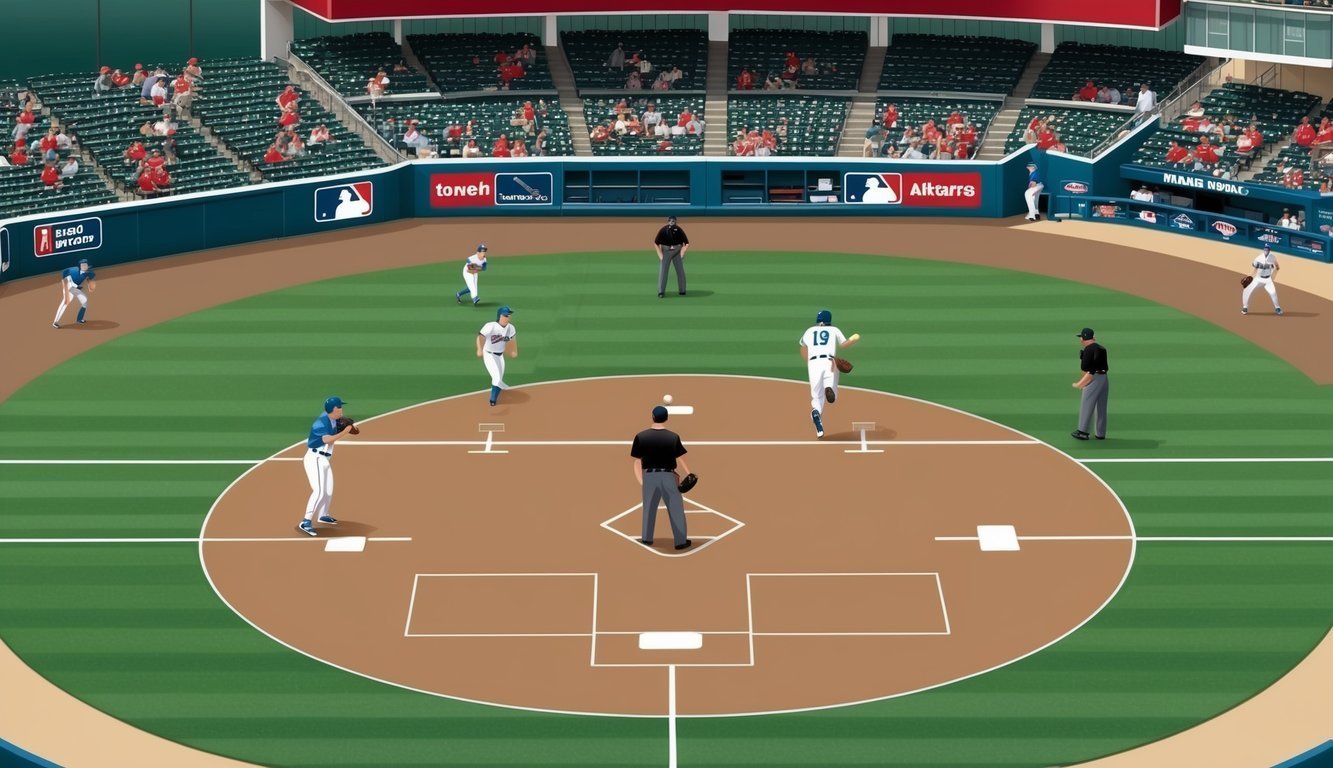Baseball fans often wonder about the challenge system in Major League Baseball games.
This aspect of the sport adds an extra layer of strategy and fairness to the proceedings on the field. In MLB regular season games, team managers are given one challenge to start, with the potential for a second if their initial challenge is successful.
The challenge system allows managers to contest certain umpire calls, potentially overturning decisions that could impact the outcome of the game.
This process involves instant replay review, where umpires examine video footage to ensure the correct call is made.
The system aims to reduce errors and enhance the accuracy of officiating in professional baseball.
Postseason games offer managers even more opportunities to challenge calls.
Teams are granted two challenges from the start of playoff contests, recognizing the heightened stakes of these crucial matchups.
This increased allowance reflects MLB’s commitment to getting calls right when it matters most, ensuring that championship-deciding games are as fair and accurately officiated as possible.
Fundamentals of MLB Challenges

The MLB challenge system allows managers to contest certain umpire decisions during a game.
It’s an exciting tool that can change the course of play.
Managers get one challenge at the start of regular season games.
If they’re successful, they receive a bonus challenge.
In the postseason, teams start with two challenges.
What can be challenged? Here’s a quick list:
- Fair/foul calls in the outfield
- Catch/trap decisions in the outfield
- Force/tag play calls
- Home run decisions
To initiate a challenge, the manager signals to the umpire.
The umpires then review the play using video replay technology.
Not all plays are challengeable, however.
For example, balls and strikes can’t be contested.
The challenge system aims to ensure fair play and correct crucial calls.
It adds an extra layer of strategy for managers, who must decide when to use their precious challenges.
Umpires can also initiate reviews on their own for certain plays, especially in the later innings.
This helps maintain accuracy throughout the game.
How Challenges Work in Practice

Managers strategically use challenges to overturn unfavorable calls during MLB games.
The process involves quick decision-making and careful consideration of potential outcomes.
Regular Season Use
During the regular season, each team receives one challenge to start the game.
Managers have 20 seconds to decide whether to challenge a play.
If they choose to challenge, umpires review the play using video footage.
Successful challenges allow teams to keep their challenge and potentially use it again later.
If the call stands, the team loses their challenge for the rest of the game.
This system encourages managers to be selective about when to challenge.
Certain plays, like home runs, are automatically reviewed without using a team’s challenge.
Postseason Modifications
In postseason games, teams receive two challenges from the start.
This extra challenge acknowledges the higher stakes of playoff baseball.
The 20-second time limit for managers to decide on challenging remains in effect.
Postseason challenges follow the same review process as regular season games.
Umpires use video footage to make their determination.
If a call is overturned, the team retains their challenge for future use.
The additional challenge in postseason play can significantly impact crucial moments in high-pressure situations.
Managers must balance using challenges early versus saving them for potential game-changing plays later.
Types of Plays Subject to Review

Major League Baseball allows managers to challenge several types of plays during a game.
These reviewable plays cover crucial aspects of the game that can significantly impact the outcome.
Managers can challenge decisions related to player tags, touches of the base, and even certain judgment calls by the umpires.
This system ensures that key moments are scrutinized, providing a fairer outcome for teams.
Additionally, the concept of what constitutes a baseball save has also been clarified over the years, making it easier for fans and players alike to understand this critical statistic in the game.
Home Run Reviews
Home run calls are among the most critical plays subject to review.
Umpires can examine whether a ball cleared the outfield fence or if fan interference occurred.
They also check if the ball stayed fair or went foul.
These reviews help ensure that game-changing home runs are correctly awarded.
In close calls, slow-motion replays from multiple angles can reveal if a ball just scraped the top of the wall or narrowly stayed inside the foul pole.
Base Running Calls
Tag plays and force plays at bases are reviewable.
This includes stolen base attempts, pickoff plays, and close calls at first base on ground balls.
Umpires can also review whether a runner left a base too early when tagging up on a fly ball.
Managers often challenge these plays when the naked eye can’t definitively see if a tag was applied before the runner reached the base.
Slow-motion replays help determine the exact moment of contact between fielder and runner.
Catch or No Catch Scenarios
Determining whether a fielder caught a ball cleanly or trapped it against the ground is another reviewable play.
This applies to both infield and outfield catches.
Reviews can reveal if a ball touched the grass before entering a fielder’s glove or if it was secured before hitting the ground.
These calls can be game-changing, potentially turning a hit into an out or vice versa.
Impact of the Replay System on MLB

The replay system has transformed how Major League Baseball games unfold.
Fans now witness a more accurate contest, with crucial calls subject to review.
At the heart of this system is the Replay Command Center in New York’s Chelsea Market.
Here, dedicated replay officials scrutinize close plays from multiple angles.
Team challenges have become a strategic tool for managers.
They must decide when to use their limited reviews wisely, adding an extra layer of tactics to the game.
The integrity of baseball has been bolstered by this technology.
Controversial calls that once sparked heated arguments can now be resolved with greater certainty.
However, the fan experience has seen changes too.
While justice is served more often, the flow of the game can be interrupted by replay delays.
MLB has made modifications to the replay rules since its introduction.
These tweaks aim to balance accuracy with maintaining the game’s pace and excitement.
Replay has also impacted player behavior.
Baserunners and fielders often hold their positions after close plays, anticipating a potential review.
The system isn’t perfect, but it has significantly reduced game-altering mistakes.
Most fans and players agree that the benefits outweigh the occasional disruptions.
The Technology Behind the Replay System

MLB employs cutting-edge technology to ensure accurate calls through its replay system.
This includes a dedicated technology center and advanced video processing capabilities.
MLB Advanced Media
MLB Advanced Media (MLBAM) plays a crucial role in the replay system.
Based in New York’s Chelsea Market, MLBAM develops and maintains the digital infrastructure that powers MLB’s replay technology.
They utilize high-definition cameras strategically placed around ballparks to capture multiple angles of every play.
MLBAM’s systems process and transmit video feeds in real-time, allowing for quick review of contested calls.
The technology includes slow-motion and freeze-frame capabilities, enabling replay officials to scrutinize even the closest plays.
Replay Operation Center
The Replay Operation Center (ROC) in New York serves as the hub for MLB’s replay system.
Trained umpires and technicians staff the ROC.
They receive video feeds from all active games simultaneously.
When a manager challenges a call, the ROC springs into action.
Officials review multiple camera angles on high-resolution monitors.
They have access to specialized software that allows them to zoom, slow down, and synchronize different video feeds.
The ROC aims to make decisions quickly, typically within 2 minutes, to maintain game flow.
Their rulings are communicated directly to on-field umpires via a secure phone line.
